| According to herbalist David Hoffman, the bioflavonoid Vitamin P is found with Vitamin C in plants and aids its absorption in the body. It also strengthens the capillary walls while reducing high blood pressure and aiding bruising and bleeding. Example: hawthorn berries, raspberry, ginkgo.
Phenols and Phenolic glycosides: Phenol is a basic building block of many plant constituents. Some have antiseptic, febrifuge, analgesic and anti-inflammatory activities; externally, antiseptic and rubefacient properties. Examples: clove, thyme. |
John Heinerman
See book keywords and concepts |
 One of the court physicians heard about a local herbalist curing similar skin problems with the juice of smallage (what was then called celery). He obtained sufficient quantities of this herb and had the kitchen cooks extract juice from the leaves and stems by amply pounding them. He gave this juice to Henry in small amounts, and within days the king's complexion improved, only to return to its former condition whenever he returned to eating those foods which contributed to it. But the good doctor kept pouring enough celery juice down him so that, at least, the rash was held in check. One of the court physicians heard about a local herbalist curing similar skin problems with the juice of smallage (what was then called celery). He obtained sufficient quantities of this herb and had the kitchen cooks extract juice from the leaves and stems by amply pounding them. He gave this juice to Henry in small amounts, and within days the king's complexion improved, only to return to its former condition whenever he returned to eating those foods which contributed to it. But the good doctor kept pouring enough celery juice down him so that, at least, the rash was held in check. |
Daniel B. Mowrey, Ph.D.
See book keywords and concepts |
 Questions and Answers," The herbalist, 28-29.
3. Burk, D. & Woods, N. "Hydrogen peroxide catalase, glutathione peroxidase, quinones, nordihydroguaiaretic acid, and phos-phopyridine nucleotides in relation to X-ray action on cancer cells" Radiation Research Supplement, 3, 212-226, 1963
4. Kaufman, H.P. & Ahmad, A.K.S., Fette, Seifen, und Anstrich-mittel, 68, 837, 1967.
5. Sporn, A. & Schobesch, O. "Toxicity of nordihydroguaiaretic acid." Igiena (Bucharest), 15(12), 725-726, 1966.
6. Buu-Hoi, N.P. & Ratsimamanga, A.R., "Retarding action of nordihydroguaiaretic acid on aging in rats. Questions and Answers," The herbalist, 28-29.
3. Burk, D. & Woods, N. "Hydrogen peroxide catalase, glutathione peroxidase, quinones, nordihydroguaiaretic acid, and phos-phopyridine nucleotides in relation to X-ray action on cancer cells" Radiation Research Supplement, 3, 212-226, 1963
4. Kaufman, H.P. & Ahmad, A.K.S., Fette, Seifen, und Anstrich-mittel, 68, 837, 1967.
5. Sporn, A. & Schobesch, O. "Toxicity of nordihydroguaiaretic acid." Igiena (Bucharest), 15(12), 725-726, 1966.
6. Buu-Hoi, N.P. & Ratsimamanga, A.R., "Retarding action of nordihydroguaiaretic acid on aging in rats. |
Christian Ratsch
See book keywords and concepts |
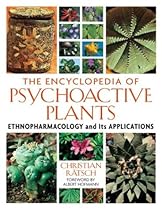 The Italian herbalist Matthiolus was the first to mention the name belladonna, "beautiful woman," explaining that Italian women would drip juice pressed from the plant into their eyes in order to make themselves more beautiful. The juice contains atropine, which effects a temporary dilation of the pupils (mydriasis). At the time, large black pupils were the epitome of beauty. Because of this dilatory effect, belladonna juice also gained great significance in eye medicine. Ophthalmologists still use atropine, named after Atropa, to achieve the same effect. The Italian herbalist Matthiolus was the first to mention the name belladonna, "beautiful woman," explaining that Italian women would drip juice pressed from the plant into their eyes in order to make themselves more beautiful. The juice contains atropine, which effects a temporary dilation of the pupils (mydriasis). At the time, large black pupils were the epitome of beauty. Because of this dilatory effect, belladonna juice also gained great significance in eye medicine. Ophthalmologists still use atropine, named after Atropa, to achieve the same effect. |
James A. Duke, Ph.D.
See book keywords and concepts |
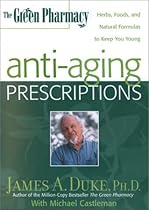 Many of these deaths can be attributed to college kids foolishly taking Chinese ephedra (ma huang) as an intoxicant, not knowing that in very high doses—much higher than any responsible herbalist would recommend—this herb can cause potentially fatal heart problems.
To put the number of herb-related deaths in perspective, consider that about 100 people a year die from serious allergic reactions (anaphylactic reactions) to peanuts, shrimp, and other foods. That's twice the number of people who die from using medicinal herbs. Many of these deaths can be attributed to college kids foolishly taking Chinese ephedra (ma huang) as an intoxicant, not knowing that in very high doses—much higher than any responsible herbalist would recommend—this herb can cause potentially fatal heart problems.
To put the number of herb-related deaths in perspective, consider that about 100 people a year die from serious allergic reactions (anaphylactic reactions) to peanuts, shrimp, and other foods. That's twice the number of people who die from using medicinal herbs. |
| I'd suggest taking a field class with a knowledgeable herbalist or botanist if one is offered in your area.
Personally, I believe that these seven really are fountains of youth— more so than many other herbs with that reputation. As a bonus, when you're out gathering them, you're communing with nature and getting great exercise all at the same time. If.that doesn't promote youth and vitality, I don't know what does. amaranth [amaranthus, various species). This old standby weed keeps coming up in abandoned pastures, old farmsteads, and weedy plots. Look for it in rich soil and full sun. |
| I would never recommend using such huge doses of Chinese ephedra, nor would any reputable herbalist whom I know. When taken in the normal dose range for weight-loss thermogenesis, the herb has not produced any serious side effects. It would be a shame for the FDA to deny people who are clinically obese the opportunity to try Chinese ephedra just because of a few instances in which the herb was used inappropriately. stressed or depressed-—perhaps meditation, yoga, or gentle stretching. While practicing the technique, inhale a calming essential oil. |
Thomas Bartram
See book keywords and concepts |
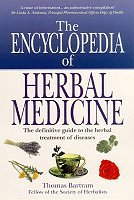 English herbalist who settled near the Essex Marshes to study the ague which was endemic. A scholarly man, he proceeded by observation and experiment to employ herbs in the treatment of fevers. Though unqualified, he attracted rich and poor and was so successful that visits from high European society compelled him to open in London where he developed the most famous and fashionable practice of his day.
After curing King Charles II of a malignant fever he was granted a knighthood and made Physician to the King much to the chagrin of the College of Physicians. English herbalist who settled near the Essex Marshes to study the ague which was endemic. A scholarly man, he proceeded by observation and experiment to employ herbs in the treatment of fevers. Though unqualified, he attracted rich and poor and was so successful that visits from high European society compelled him to open in London where he developed the most famous and fashionable practice of his day.
After curing King Charles II of a malignant fever he was granted a knighthood and made Physician to the King much to the chagrin of the College of Physicians. |
| FRCP January 1995 treatment by a medical practitioner or qualified consulting medical herbalist. All information has a record of efficacy, though treatment cannot be expected to be always successful. Any condition that persists for more than ten days should be referred to a doctor, especially if it is not in the nature of a cold or influenza. All reasonable care has been taken in the preparation of this book. The author does not imply any guarantee of cure and cannot, accept responsibility for adverse effects arising from the use of thereof. |
| Action: Regarded by the professional herbalist as the purest and safest stimulant known. Opens up every tissue in the body to an increased flow of blood.
Produces natural warmth, equalising the circulation in the aged. Stimulant and iron-bearer, it accelerates oxygenation of cells. Antiseptic. Antispasmodic for relief of pain. Carminative.
Prostaglandin antagonist and analgesic. (F. Fletcher Hyde, The Herbal Practitioner (Dec. 1977))
Well suited to persons of feeble constitution with poor circulation, lacking in energy and fear of the slightest draft. Hypothermia. |
| The relationship between a medical herbalist and his or her patient is that of a professional with a client. The patient puts complete trust in the practitioner's integrity and it is the duty of members not to abuse this trust in any way. Proper moral conduct must always be paramount in member's relationships with patients. Members must act with consideration concerning fees and justification for treatment. Rule 2. No member may advertise or allow his or her name to be advertised in any way, except in the form laid down by the Council of the Institute. |
Christian Ratsch
See book keywords and concepts |
 Pennyroyal was also used to produce love drinks and was considered an obscene metaphor for a woman's pubic hair and a symbol of illicit sexuality. The herbalist Bodin (1591) identified it with Homer's nepenthes. Pennyroyal was one of the most renowned abortifacients of antiquity and was used medicinally to treat cramps in the lower abdomen (Ratsch 1995a, 237 f.*). In ancient times, it was also burned as an incense. In South America, the dried plant is still used as a ritual incense and is offered to the earth goddess Pachamama (Ott 1993,412*). Pennyroyal was also used to produce love drinks and was considered an obscene metaphor for a woman's pubic hair and a symbol of illicit sexuality. The herbalist Bodin (1591) identified it with Homer's nepenthes. Pennyroyal was one of the most renowned abortifacients of antiquity and was used medicinally to treat cramps in the lower abdomen (Ratsch 1995a, 237 f.*). In ancient times, it was also burned as an incense. In South America, the dried plant is still used as a ritual incense and is offered to the earth goddess Pachamama (Ott 1993,412*). |
Schuyler W. Lininger, Jr. DC
See book keywords and concepts |
 Culpeper, the well-known eighteenth-century herbalist, cited its use for opening "obstructions" of the liver and spleen and recommended it for the treatment of jaundice.
Active Constituents
Milk thistle seeds contain a bioflavonoid complex known as silymarin. This constituent is responsible for the medical benefits of the plant.1 Silymarin is made up of three parts: silibinin, silidianin, and sili-cristin. Silibinin is the most active and is largely responsible for the benefits attributed to silymarin. Culpeper, the well-known eighteenth-century herbalist, cited its use for opening "obstructions" of the liver and spleen and recommended it for the treatment of jaundice.
Active Constituents
Milk thistle seeds contain a bioflavonoid complex known as silymarin. This constituent is responsible for the medical benefits of the plant.1 Silymarin is made up of three parts: silibinin, silidianin, and sili-cristin. Silibinin is the most active and is largely responsible for the benefits attributed to silymarin. |
Thomas Bartram
See book keywords and concepts |
 A herb rich in mucilage that is soothing, bland, offering protection to inflamed or irritable mucous surfaces. Herbalist's alternative to glycerine. A demulcent is almost always used together with anti-lithics for stone to protect surrounding mucosa (i.e. Parsley Piert).
Agar Agar, Aloe Vera, Arrowroot, Chickweed, Coltsfoot, Cornsilk, Fenugreek seeds, Iceland Moss, Irish Moss, Ispaghula seeds, Linseed, Liquorice root, Marshmallow root, Meadowsweet, Mullein, Oatmeal, Plantain, Slippery Elm bark, Tragacanth gum, White Pond Lily.
DEMYELINATING DISEASES. A herb rich in mucilage that is soothing, bland, offering protection to inflamed or irritable mucous surfaces. Herbalist's alternative to glycerine. A demulcent is almost always used together with anti-lithics for stone to protect surrounding mucosa (i.e. Parsley Piert).
Agar Agar, Aloe Vera, Arrowroot, Chickweed, Coltsfoot, Cornsilk, Fenugreek seeds, Iceland Moss, Irish Moss, Ispaghula seeds, Linseed, Liquorice root, Marshmallow root, Meadowsweet, Mullein, Oatmeal, Plantain, Slippery Elm bark, Tragacanth gum, White Pond Lily.
DEMYELINATING DISEASES. |
James A. Duke, Ph.D.
See book keywords and concepts |
 My friend Kathy Keville, an herbalist and aromatherapist, recommends this blend of essential oils: 4 drops of lavender, 2 drops of marseen estimates that some 6 percent of the U.S. population is iron deficient. The vast majority is women.
This makes sense, when you consider that premenopausal women lose blood every month, during their periods. Red blood cells are rich in iron. In fact, about 75 percent of the body's supply of the mineral is found in the red blood cells. My friend Kathy Keville, an herbalist and aromatherapist, recommends this blend of essential oils: 4 drops of lavender, 2 drops of marseen estimates that some 6 percent of the U.S. population is iron deficient. The vast majority is women.
This makes sense, when you consider that premenopausal women lose blood every month, during their periods. Red blood cells are rich in iron. In fact, about 75 percent of the body's supply of the mineral is found in the red blood cells. |
Robyn Landis
See book keywords and concepts |
 If you consult or know a professional herbalist (always a good idea) who has the scoop on sources and crops from year to year, you can make better choices. Unfortunately, the average layperson without inside information will have a hard time determining what's good, which is why we encourage you to shop around for sources, get to know experts you can trust, and keep educating yourself. (Quality and source issues are discussed more fully in Chapter 23, "Living It: Herbs in Practice.")
Goldenseal has virtually no side effects. If you consult or know a professional herbalist (always a good idea) who has the scoop on sources and crops from year to year, you can make better choices. Unfortunately, the average layperson without inside information will have a hard time determining what's good, which is why we encourage you to shop around for sources, get to know experts you can trust, and keep educating yourself. (Quality and source issues are discussed more fully in Chapter 23, "Living It: Herbs in Practice.")
Goldenseal has virtually no side effects. |
Christian Ratsch
See book keywords and concepts |
 The English herbalist lohn Gerard may have been the first to report on the mysterious new plant (Meier 1995b, 116; Ratsch 1991a, 203*). In the eighteenth and nineteenth centuries, botanists helped spread many passionflower species across much of the globe (Meier 1995b, 115). Most species were described in the nineteenth century (Schneider 1974,3:31*).
Today, passion fruits are regarded as one of the most prized exotic fruits in the world (Mollenhauer 1962). The genus is still awaiting comprehensive ethnopharmacological research, particularly with regard to its psychoactive usefulness (cf. The English herbalist lohn Gerard may have been the first to report on the mysterious new plant (Meier 1995b, 116; Ratsch 1991a, 203*). In the eighteenth and nineteenth centuries, botanists helped spread many passionflower species across much of the globe (Meier 1995b, 115). Most species were described in the nineteenth century (Schneider 1974,3:31*).
Today, passion fruits are regarded as one of the most prized exotic fruits in the world (Mollenhauer 1962). The genus is still awaiting comprehensive ethnopharmacological research, particularly with regard to its psychoactive usefulness (cf. |
John Heinerman
See book keywords and concepts |
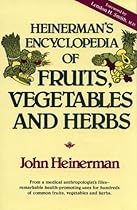 Calms Headaches and Hyperactivity
If you've ever suffered from an occasional migraine headache or have hyperactive childlren or grandkids, then you should consider the success that the famous French herbalist, Maurice Messegue, had with chamomile. After just 14 days of intensive treatment with chamomile a man who had debilitating migraines was cured. To make a nice, relaxing tea, simply steep 2 tbsps. of fresh or dried flowers in 1 pint of boiling water for 40 minutes. Strain, sweeten with pure maple syrup and drink 1-2 cups at a time. Calms Headaches and Hyperactivity
If you've ever suffered from an occasional migraine headache or have hyperactive childlren or grandkids, then you should consider the success that the famous French herbalist, Maurice Messegue, had with chamomile. After just 14 days of intensive treatment with chamomile a man who had debilitating migraines was cured. To make a nice, relaxing tea, simply steep 2 tbsps. of fresh or dried flowers in 1 pint of boiling water for 40 minutes. Strain, sweeten with pure maple syrup and drink 1-2 cups at a time. |
Ralph W. Moss, Ph.D.
See book keywords and concepts |
 During the Ming Dynasty of China (1368-1644 ad), the herbalist, Wu Ming, called the shiitake (black forest) mushroom the "elixir of life."
A wide variety of mushrooms, and mushroom-derived products, are still in use in China, Japan and other countries for their health-giving effects. In China over 270 species of mushrooms are believed to have medicinal properties and 50 of those are thought to have antitumor effects. There is an emerging body of scientific evidence to back up traditional claims for the virtues of such exotic food items. One of these is the maitake mushroom. During the Ming Dynasty of China (1368-1644 ad), the herbalist, Wu Ming, called the shiitake (black forest) mushroom the "elixir of life."
A wide variety of mushrooms, and mushroom-derived products, are still in use in China, Japan and other countries for their health-giving effects. In China over 270 species of mushrooms are believed to have medicinal properties and 50 of those are thought to have antitumor effects. There is an emerging body of scientific evidence to back up traditional claims for the virtues of such exotic food items. One of these is the maitake mushroom. |
Michael Lerner
See book keywords and concepts |
 The acupuncturist or herbalist you choose should also be familiar with Western medical protocols so that he does not prescribe a treatment that contradicts your primary program (e.g., antioxidants that will interfere with radiation treatments). Other interview questions: How does the practitioner assess the success of treatment? What criteria are used for this assessment? How accessible is the practitioner both for office visits and phone consultations? What kind of sterile procedures are used? What is the fee structure? Is there a sliding scale? The acupuncturist or herbalist you choose should also be familiar with Western medical protocols so that he does not prescribe a treatment that contradicts your primary program (e.g., antioxidants that will interfere with radiation treatments). Other interview questions: How does the practitioner assess the success of treatment? What criteria are used for this assessment? How accessible is the practitioner both for office visits and phone consultations? What kind of sterile procedures are used? What is the fee structure? Is there a sliding scale? |
Earl Mindell
See book keywords and concepts |
 It is also available over the counter as dried leaves, flowers, tinctures, extract, oil, ointment, capsules, and prepared tea, but I would not recommend it for long-term use without the supervision of an herbalist or other medical professional.
CAUTION: St. John's wort may cause sensitivity to light and could seriously exacerbate sunburn. (This usually only occurs with high doses.) Do not combine with prescribed antidepressants. It is also available over the counter as dried leaves, flowers, tinctures, extract, oil, ointment, capsules, and prepared tea, but I would not recommend it for long-term use without the supervision of an herbalist or other medical professional.
CAUTION: St. John's wort may cause sensitivity to light and could seriously exacerbate sunburn. (This usually only occurs with high doses.) Do not combine with prescribed antidepressants. |
John Heinerman
See book keywords and concepts |
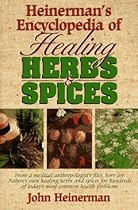 The third opinion must come from someone steeped in traditional folk medicine; this can be an herbalist, a Native American shaman or medicine man, an Oriental practitioner or acupuncturist, a foot reflexologist, a massage therapist, an iridologist, or an unlicensed nutritionist. And since a definite connection has already been established between the mind and body in causes of illness, it is imperative that someone like a priest, rabbi, minister, psychologist, psychiatrist, social worker, or metaphysical counselor be consulted. The third opinion must come from someone steeped in traditional folk medicine; this can be an herbalist, a Native American shaman or medicine man, an Oriental practitioner or acupuncturist, a foot reflexologist, a massage therapist, an iridologist, or an unlicensed nutritionist. And since a definite connection has already been established between the mind and body in causes of illness, it is imperative that someone like a priest, rabbi, minister, psychologist, psychiatrist, social worker, or metaphysical counselor be consulted. |
| A Freckle Remover
There aren't very many plants that can do what American centaury can: South Carolina herbalist Mildred Park claims that the flowers and leaves made into tea are great for removing freckles.
She pours two cups of boiling water over 3/4 cup of finely cut flowers and leaves and lets the brew steep for an hour, covered. One or two cotton balls are then soaked in this tea, the excess liquid squeezed out, and then gently rubbed over a small area (the size of a silver dollar) of freckled skin for a minute or so. The process is repeated several times with fresh cotton balls. |
Thomas Bartram
See book keywords and concepts |
 The modern herbalist does not use suppressives but favours expectorants or 'eliminatives' to soothe irritated surfaces and expel excess mucus. If a dry unproductive irritating cough persists despite treatment, a qualified practitioner should be consulted.
Addition of a nervine (Skullcap, Wild Lettuce, etc) acts as a relaxant. May be a particular help for nervous cough. Add Hawthorn or Motherwort to sustain the heart where necessary. Alternatives. Teas. The modern herbalist does not use suppressives but favours expectorants or 'eliminatives' to soothe irritated surfaces and expel excess mucus. If a dry unproductive irritating cough persists despite treatment, a qualified practitioner should be consulted.
Addition of a nervine (Skullcap, Wild Lettuce, etc) acts as a relaxant. May be a particular help for nervous cough. Add Hawthorn or Motherwort to sustain the heart where necessary. Alternatives. Teas. |
Phyllis A. Balch, CNC
See book keywords and concepts |
 CONSIDERATIONS FOR USE
Epimedium tablets should be taken as directed by an herbalist. It is a relatively nontoxic herb, but with prolonged use can cause side effects such as dizziness, vomiting, dry mouth, increased thirst, or nosebleed. If any of these symptoms appear, discontinue the herb. Extreme overdoses can result in exaggerated reflexes, spasms, and respiratory arrest. People with prostate disorders or high blood pressure should avoid epimedium. CONSIDERATIONS FOR USE
Epimedium tablets should be taken as directed by an herbalist. It is a relatively nontoxic herb, but with prolonged use can cause side effects such as dizziness, vomiting, dry mouth, increased thirst, or nosebleed. If any of these symptoms appear, discontinue the herb. Extreme overdoses can result in exaggerated reflexes, spasms, and respiratory arrest. People with prostate disorders or high blood pressure should avoid epimedium. |
Gary Null
See book keywords and concepts |
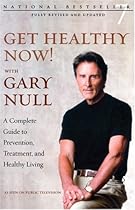 Puotinen, a noted herbalist, explains that the best herb to choose depends on the cause of the problem. If it can be put down to an arterial blockage, ginkgo biloba, widely regarded as a memory tonic, can help increase circulation, as has been documented in European studies. If you take 240 milligrams (mg) of ginkgo daily, it should relieve impotence due to arterial blockage. Ginkgo biloba is best taken as a standardized extract because the constituents are not readily assimilated by the body. It does not break down well with alcohol either so it's not effective as a tincture or crude extract. Puotinen, a noted herbalist, explains that the best herb to choose depends on the cause of the problem. If it can be put down to an arterial blockage, ginkgo biloba, widely regarded as a memory tonic, can help increase circulation, as has been documented in European studies. If you take 240 milligrams (mg) of ginkgo daily, it should relieve impotence due to arterial blockage. Ginkgo biloba is best taken as a standardized extract because the constituents are not readily assimilated by the body. It does not break down well with alcohol either so it's not effective as a tincture or crude extract. |
| These are popular in Chinese medicine, and can be obtained by prescription from an herbalist.
Corn silk tea. This helps to get rid of the bloating that comes from too many hormones stored in the blood. Women's Rhythm also eliminates bloating. This formula can be found in certain health food stores or ordered from Kahn Herbs.
Xiao Yao Wan. This wonderful remedy, which can be purchased at pharmacies in Chinatowns in major cities, helps digestive processes. Not only does this formula relieve painful periods, it also alleviates anger.
Green tea. |
| Women who have nerve-related menstrual pain can benefit from tofu, but should stay away from too many cold raw salads, hot spicy foods, and even white potatoes. herbalist Letha Hadady suggests this soothing recipe: warm tofu cooked with sweet spices, like pumpkin pie spices or nutmeg. This quiets the nerves and helps a woman feel nurtured and relaxed.
Dr. Anthony Penepent, a physician who practices natural hygiene, helps patients with painful menses by placing them on a strict hygienic regimen. "I put them on a fast one day before the onset of their period. |
| Hadady's clients often have conditions that are unrelated to heart disease, according to them; but with her special training as an herbalist, she sees a connection to the heart. Mind, body, spirit, all are interconnected and our heart is affected by all of these things. Depression, for example, is a problem connected to a weak heart. Insomnia, poor concentration and palpitations are all signs that poor circulation could be touching the heart.
Many Western doctors will say herbs, especially Oriental ones, are not tested. |
| They might have chest pains, difficulty breathing, but they generally are not going to the doctor and, of course, not to their herbalist. They say, "I'm tired; I'm under stress," and ignore it. But that is a terrible approach because some of the underlying problems of heart disease are the ones they are complaining of: fatigue, stress, and poor digestion. Poor digestion and fatigue lead to cholesterol buildup, which leads to pain and heart congestion. People try to breathe more deeply and reduce stress when they experience these early symptoms, but it does not help. |












